

Coffee Beans in UAE
(19 products available)Coffee beans need greater authenticity to deliver an unfiltered aromatic experience. To ensure that you're receiving a decent deal when buying coffee beans online, consider the following tips. Coffee beans are the seeds of the coffee plant, a fruit that resembles a cherry. If left unprocessed, they can be ground and roasted to make coffee, or they can be planted to create more coffee trees. Rich flavors and smells found in coffee beans form the basis of the coffee industry. Lattes, espresso, and cold brews are among the beverages that use coffee beans. They drive innovation in brewing and consumption trends and contribute to the worldwide food & beverages business. On TradersFind, you can easily get the best coffee beans manufacturers in UAE. They provide high-quality coffee. The coffee beans suppliers listed on the portal provide a wide selection of coffees for businesses. Our comprehensive listings and detailed product specifications make it seamless to find the leading coffee beans companies to fulfill your requirements.
Coffee beans need greater authenticity to deliver an unfiltered aromatic experience. To ensure that you're receiving a decent deal when buying coffee beans online, consider the following tips. Coffee beans are the seeds of the coffee plant, a fruit that resembles a cherry. If left unprocessed, they can be ground and roasted to make coffee, or they can be planted to create more coffee trees. Rich flavors and smells found in coffee beans form the basis of the coffee industry. Lattes, espresso, and cold brews are among the beverages that use coffee beans. They drive innovation in brewing and consumption trends and contribute to the worldwide food & beverages business.
On TradersFind, you can easily get the best coffee beans manufacturers in UAE. They provide high-quality coffee. The coffee beans suppliers listed on the portal provide a wide selection of coffees for businesses. Our comprehensive listings and detailed product specifications make it seamless to find the leading coffee beans companies to fulfill your requirements.
Coffee beans need greater authenticity to deliver an unfiltered aromatic experience. To ensure that you're receiving a decent deal when buying coffee beans online, consider the following tips. Coffee beans are the seeds of the coffee plant, a fruit that resembles a cherry. If left unprocessed, they can be ground and roasted to make coffee, or they can be planted to create more coffee trees. Rich flavors and smells found in coffee beans form the basis of the coffee industry. Lattes, espresso, and cold brews are among the beverages that use coffee beans. They drive innovation in brewing and consumption trends and contribute to the worldwide food & beverages business.
On TradersFind, you can easily get the best coffee beans manufacturers in UAE. They provide high-quality coffee. The coffee beans suppliers listed on the portal provide a wide selection of coffees for businesses. Our comprehensive listings and detailed product specifications make it seamless to find the leading coffee beans companies to fulfill your requirements.
View lessRobusta Roasted Coffee Beans
- Coffee Type : 100% Organic Robusta Coffee Sourced from Vietnam
- Roast Level : Medium
- Taste : Fruity, Milk Chocolate & Mellow Honey Sweetness
Description: Experience the exceptional flavor of The Caphe Vietnam’s Robusta Roasted Coffee Beans. Made from 100% ripe berries, our beans are carefully processed with natural fermentation and dried on farm racks. Adhering to Fine Robusta standards, they deliver a rich profile with notes of sour fruitiness, dark chocolate, and mellow sweetness. Each cup highlights the unique characteristics of Vietnam’s top coffee regions. Enjoy a perfect cup of coffee with The Caphe Vietnam's Robusta Roasted Coffee Beans, crafted to delight every coffee lover.
Roasted Coffee Beans
- Bean Type : Robusta, Blend
- Roast Level : Medium
- Origin : Vietnam
Description: Enjoy the rich taste of Vietnam with The Caphe's Roasted Coffee Beans. Grown in Vietnam’s highlands, our beans are expertly roasted to bring out a bold and smooth flavor. Perfect for any coffee lover, these beans offer a full-bodied taste with a touch of Vietnamese charm. Ideal for brewing at home or at your café, they ensure every cup is flavorful and satisfying. Try The Caphe Vietnam’s Roasted Coffee Beans for a true taste of Vietnamese coffee excellence.
Other Categories
Other Categories
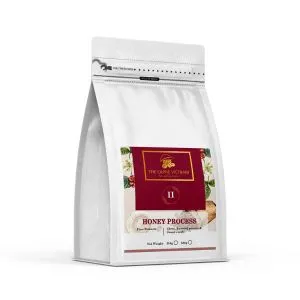
- Coffee Type : 100% Organic Robusta Coffee Sourced From Vietnam
- Roast Level : Medium
View more...
The Caphe Vietnam
Other Categories
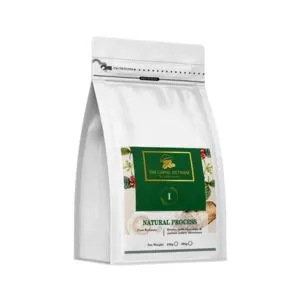
- Coffee Type : 100% Organic Robusta Coffee Sourced from Vietnam
- Roast Level : Medium
View more...
The Caphe Vietnam
Other Categories
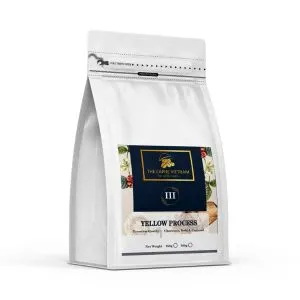
- Bean Type : Robusta, Blend
- Roast Level : Medium
View more...
The Caphe Vietnam
Other Categories
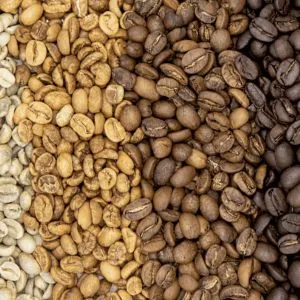
- Packaging : 250 G
- Type Of Coffee Beans : Roasted
View more...
Alorobia Roastery
Other Categories
Coffee | Tea | Coffee Powder
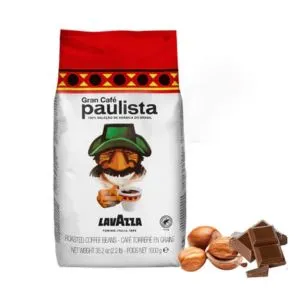
- Packaging : 1 Kg
- Type Of Coffee Beans : Gran Cafe Paulista Beans
View more...
Eurocoffee Abu Dhabi
Other Categories
Tea | Coffee | Coffee Capsules

- Content : 1kg
- Type : Ground & Coffee Beans
View more...
Lulu Hypermarket Abu Dhabi
Other Categories
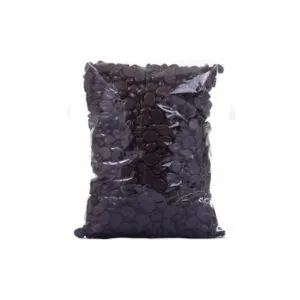
- Packing : Packet
- Size : 1 Kg
View more...
Green House Trading LLC

- Coffee Type : Turkish Coffee
- Usage/Application : Industrial
View more...
Julnar General Trading LLC
Other Categories
Coffee | Tea | Coffee Machines
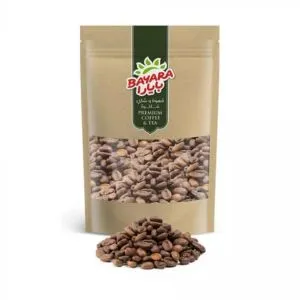
- Packaging : 250gm, 500gm, 1kg, 2kg
- Beans : Single Origin Beans
View more...
Bayara
Other Categories
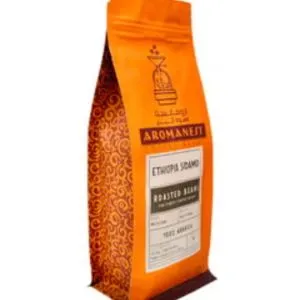
- Packaging : 250 G
- Dietary Needs : Vegetarian
View more...
Noon
Other Categories

- Coffee Type : 100% Organic Robusta Coffee Sourced from Vietnam
- Roast Level : Medium
View more...
The Caphe Vietnam
Other Categories

- Bean Type : Robusta, Blend
- Roast Level : Medium
View more...
The Caphe Vietnam
Other Categories
An easy way to post your sourcing requests and get quotes.
- One request, multiple quotes
- Verified suppliers matching
- Quotes comparison and sample request
Types of Coffee Beans
Arabica
Coffee beans of the Arabica coffee beans variety are the most popular and well-liked variety. Their superb flavor profile, which is subtle and delicate with traces of floral, fruity, and occasionally wine-like flavors, is well-known.
Robusta
In the commercial coffee industry, robusta roasted coffee beans are the second most widely produced variety and are renowned for their affordability. Robusta coffee beans are a common addition to espresso blends because they help build the crema and hit greater caffeine.
Excelsa
Excelsa coffee is a less popular and well-known variety of coffee beans in UAE. This variety of coffee has a very distinctive flavor profile that varies from tart and fruity to dark and smokey. Some coffee lovers frequently describe this bean as having an almost peppery scent and a distinctly "wild" taste.
Liberia
The least prevalent and least important species for the coffee industry are liberica beans. Their flavor profile is defined by elements of wood, smoke, and occasionally flowers, along with a rich, flavorful taste and an intense scent.
Coffee Bean growing regions
Bean Belt
Globally, the Middle East, Africa, Southeast Asia, Central and South America, and South America are the main coffee-growing regions. These areas are known as "The Bean Belt" because of their altitude, number of growing regions, and tropical and subtropical climates, which are perfect for coffee bean growth.
Americas, Central, and South
The majority of the coffee consumed in Central America, which is at the top of the Bean Belt, is produced in Guatemala, Nicaragua, and Honduras. Overall, Central American coffee beans are regarded as being mild, medium-bodied, and exceptionally well-balanced. Coffee from the South American region is regarded as one of the most well-liked and talked-about coffees available.
The Middle East and Africa
Several nations, including Kenya, Ethiopia, and Tanzania, are included in the African coffee region. This region is known for producing coffee with a sweet, fruity, and delicate flowery aroma that is renowned for its unique and nuanced taste. Ethiopia also contributes significantly, making up around 3% of the global coffee market, but Kenya, on the slopes of Mount Kenya, is the major producer of coffee in Africa.
Asia-Pacific
Southeast Asia has grown and eaten coffee since the late seventeenth century. Sulawesi, Java, and Sumatra in Indonesia are well known for their distinctive, earthy, rich, and full-bodied coffee, which is frequently found in blends. The beans grown on these islands typically have a nutty aroma, a juicy, fruity taste, and clean, smooth qualities.
Coffee Bean Lifecycle
Planting
Due to Arabia's stringent control over coffee production for hundreds of years, exporting healthy seeds outside of the Arabian Peninsula was nearly impossible. Indeed, during his pilgrimage to Mecca in around 1600, Baba Budan snuck out the first viable seeds. These beans are the source of the seedlings that travelled to Martinique from Paris.
Seedling
Large shade trees shield the seedlings from the harsh tropical heat. The seedlings are then moved into raised beds or containers above the normal soil level to provide adequate drainage. The new coffee plants are grown for nine to eighteen months, until they reach a height of around twenty-four inches, in this protected nursery setting.
Harvesting
An extensive harvest, often occurring once a year, requires a lot of labor. Only ripe cherries are chosen for specialty coffee, which is why it is always hand-picked. Pickers of coffee typically make several passes during the four to six-month harvest season, usually every eight to ten days. A skilled picker can gather up to 200 pounds of fruit in a single day, which is about equal to 50–60 pounds of uncooked fresh coffee beans.
Processing the cherry
To process the coffee cherries, the husk and fruit must be carefully removed from the beans, and they must then be dried until they have an 11% moisture content. There are two primary processing techniques, and the choice made depends on the objectives of the enterprise, the resources at hand, and local customs. The flavor profile may be significantly impacted by the processing method selected.
Preparing for Export
Until they are prepared for export, processed coffee is kept in sisal or jute bags at the point of origin. Fresh coffee beans are hulled and sorted for the global market using a combination of state-of-the-art gear and skilled labor. Machines are used for hulling. Hulling is the process of removing the entire husk or just the exocarp, mesocarp, and endocarp from dry-processed coffee.
Shipping
After being carefully stored in large covered warehouses, the bagged coffee beans merchants supply beans through transported via traditional means to the docks. There, stevedores with knowledge in handling coffee carefully ensure that the bags are securely stored inside the ship. To ensure adequate air circulation during the journey, the bags are arranged in layers within the hold and spaced between wooden battens or pallets.
Coffee Roasting Process
There are just three coffee roasting phases required to turn green coffee beans into brown ones, thus the procedure isn't very lengthy or complex. Drying, roasting, and cooling are these.
Stage of drying
The coffee beans must be dried before anything further can be done. Coffee beans retailers need to be removed before they are roasted; their humidity content is approximately 10%. As a result of the reaction, the coffee beans will turn yellow during this drying stage from green.
For up to eight minutes, these beans are roasted in a revolving roasting drum at 160°C. Enough time has passed for the coffee beans to dry out without burning. The roasting is the main event that follows.
Stage of roasting
The main and most crucial step in the procedure is the roasting stage. Almost all of the raw coffee beans dealers make sure that the flavors, characteristics, and colors will emerge when they are roasted. This is where the famous coffee bean crack begins to happen: the roasting drum is now adjusted between 200 and 230 degrees Celsius for up to 15 minutes.
At this point, as the temperature rises, a process known as the "Maillard reaction" gradually takes place. The coffee bean's sugars and amino acids combine to create hundreds of new color and scent molecules, or melanoids, through a process known as the Maillard reaction. The well-known taste and smell of raw coffee beans originate from this response.
Stage of cooling
The coffee beans distributors go through one more round of cooling. After being dried and roasted, the beans take on a brown color and a rich flavor. Nowadays, coffee roasters abruptly stop the roasting process to rapidly bring the beans' temperature down to room temperature.
Following roasting, the coffee beans can retain all of their distinct flavors by rapidly cooling down. It takes five minutes at most to complete this phase.
How to Choose Coffee Beans
Variety of Beans
Coffea robusta (Robusta beans) and Coffea arabica (Arabica beans) are the two main varieties or cultivars of commercial beans that are available. The cost, flavor, and ease of cultivation of these two types differ.
Arabica prefers colder average temperatures and higher elevations for growth. Robusta, on the other hand, grows well in higher average temperatures and lower elevations.
In addition, Robusta grows more easily than Arabica and produces more coffee per hectare. As a result, it is less expensive and more widely available.
Roast Level
Your beans' roast level has a big impact on the texture, taste profile, and tasting notes of your coffee. The original tastes and caffeine levels of beans diminish as they roast longer, transitioning from light roasts to dark roasts.
- • Dark roast: Dark roasts have a lower acidity and caffeine content. Roasted beans with a deeper, smokey flavor are greasy. For espresso, cold brew, or black drip coffee with cream and milk, a dark roast works best.
- • Medium roast: Due to their reasonable texture and well-rounded flavor profile, medium roasts are very popular. Compared to light roasts, they are less fruity and acidic, but they are not as rich as dark roasts. Medium roasts are ideal for pour-over or espresso coffee because they are sweet, smooth, mellow, and chocolatey.
- • Light roast: Light roast coffee contains no oil on the surface and is light brown. These coffees offer a bright flavor profile, a soft body, and a crisp acidity. The unique and authentic qualities of the roasted bean are retained at lighter roasts. Light roasts are therefore ideal for drip or pour-over coffee.
Freshness
Nothing compares to a freshly roasted cup of coffee! Make sure the coffee beans importers make sure that you choose are freshly roasted at all times. Roasted coffee should be consumed within a certain amount of time. This is because the flavors created by the chemical reaction that occurs during roasting fade over time.
The majority of expert coffee drinkers concur that the best coffee is produced when coffee beans are brewed between 7 and 21 days following roasting. Make sure to check the roasting date on each coffee bag and purchase the most recent one.
Coffee by Origin vs. Blends
Are specialty coffees making you angry? These premium coffees come in both single-origin and blend varieties. What makes a difference, though? Is coffee from a single origin always better?
Coffee cherries that are picked from a particular area or nation are used to make single-origin coffee. Hawaiian Kona, Brazilian Cerrado, and Sumatra Mandheling are excellent examples.
These coffees are limited to seasonal availability. Each has a distinct flavor that comes from the soil and rainfall of the growing region. This lets those who enjoy coffee appreciate the aroma, acidity, and smooth, well-balanced flavor profile together with the pureness of the bean.
Best Way To Brew Coffee Beans
Depending on the flavor and texture you want, there are several ways to brew coffee beans. Knowing how the different brewing techniques operate will help you create delicious coffee or expand your repertoire of meal and dessert ideas.
- • Auto-drip over: Drip brewing is the most popular method for making coffee. The strength or weakness of the flavor profile is influenced by the temperature and flow rate of the water when brewing coffee in an auto-drip machine or pour-over configuration.
- • Cold brew: For chilled drinks or coffees with a low acid flavor profile, the cold brew method is a fantastic choice. The flavor that is produced with this method is full-bodied and smooth because heat is not used.
- • French press: Especially for single cups, the French press brewing method is a well-liked immersion brewing choice for getting the most flavor out of your coffee beans. The ground beans are exposed to hot water for a longer amount of time when using this method as opposed to auto-drip brewing, which produces a brew with a rich and robust flavor profile.
How to Store Coffee Beans Properly
Coffee beans should be stored properly to extend their shelf life after roasting and guarantee that you can make fresh coffee every morning. The following are some pointers for storing premium coffee beans:
- • Whole coffee beans should be stored. Whole coffee beans take longer to lose their flavor and aroma. The oxidation process quickens when your coffee beans are ground, which reduces flavor. Coffee consumers who like freshly ground coffee will find that pre-ground coffee from the grocery store, even when it is vacuum-sealed, tastes stale.
- • Make use of a sealed container. Oxygen quickens the staling process considerably. It is ideal to store your coffee beans in an airtight canister to preserve their valuable flavor and aroma.
- • Store the coffee beans somewhere that is dark. Select an opaque, not transparent, airtight canister. Store your beans in a cabinet or drawer if they are still in their original packaging or a glass container.
- • Steer clear of the fridge. Refrigerated coffee beans will absorb excess moisture and smell from meals. The original flavor of the beans will disappear in a few days.
- • Beans should only be frozen if required. Before the beans start to lose flavor, unopened coffee bean bags can be kept fresh in the freezer for three to four months. Before adding the beans to the coffee grinder, always let them thaw to room temperature.
- • Only grind what is necessary. Ground coffee powder does not store as well as coffee beans do. Baristas at specialty coffee shops frequently offer to grind a bag of beans that you buy. It's best to turn down this offer if you value freshness. Instead, grind your beans at home, one pot at a time, for the freshest coffee possible.
Find the coffee beans suppliers in UAE on TradersFind
TradersFind is a reliable platform for those who are looking for coffee beans in UAE. You can find different verified coffee beans suppliers in UAE from the category page you can get the complete details such as contact details, location, or WhatsApp number. Through that, you can get in touch with top coffee beans wholesalers. In short, TradersFind is the right platform for you to connect with the top coffee beans companies in UAE without any difficulty.
Frequently Asked Questions (FAQs)
Q1: What distinguishes the flavor profiles of Arabica and Robusta?
A1: Robusta coffee is typically overroasted to a dark roast profile, where the roasty, smokey flavors overshadow any other flavor note. In contrast, Arabica coffee typically has a much more nuanced flavor profile. Robusta coffee also tends to have a rather unpleasant taste. Conversely, Arabica can be light-roasted in some circumstances to bring out flowery, citrusy, or fruity flavors; however, medium-roasted varieties are better suited for a more sweet, chocolatey taste.
Q2: How do you decaffeinate coffee beans?
A2: Speciality Coffee beans are decaffeinated using a variety of methods nowadays. These consist of sugar cane, Swiss water, and the CO2 technique. The procedures employ a variety of methods to extract the caffeine as effectively as possible without affecting the coffee beans' flavor profile.
Q3: Why is roasting necessary for green coffee beans?
A3: Because of their structural limitations, green coffee beans cannot make any kind of high-quality brewed coffee. Because of the excessive moisture content, none of the soluble chemicals could be extracted from the brewing water.
Q4: What are the 4 types of coffee beans?
A4: The four primary varieties of coffee are Liberica, Robusta, Excelsa, and Arabica, and each has a distinctly distinct flavor profile.
Q5: How to identify coffee beans?
A5: Furthermore, even by looking, arabica and robusta beans can be easily distinguished. Compared to robusta beans, arabica beans are oval and somewhat bigger. The center of the bean develops an irregular, s-shaped groove known as the "center cut" when it is roasted.
Copyright © 2024 Interconnect Marketing Management L.L.C All rights reserved.


